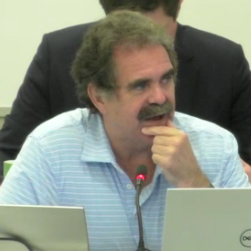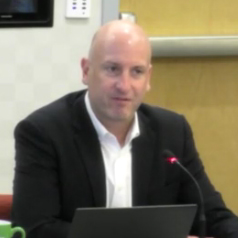Adoption of an RTO could yield significant economic benefits for the West, adding billions to the region’s annual gross product and generating tens of thousands of new jobs, according to a new report.
Released last week by Advanced Energy Economy (AEE), the Western RTO Economic Impact Study was prepared by Energy Strategies and Peterson & Associates. It draws on analysis Energy Strategies performed for a state-led study published last year to quantify the electricity system benefits of a Western RTO.
Speaking on a call July 26 to discuss the study, Energy Strategies’ Caitlin Liotiris said that while previous RTO-related studies have focused on the savings to the Western electricity system itself, there has not been much research on how those savings “might flow into the broader economy and can create ripple effects, creating additional jobs and attracting more businesses from more competitive electricity prices.”
“And this study really aims to fill that gap, looking at high-level impacts to the Western region as a whole,” Liotiris said, adding that state-by-state summaries will be coming out in the future.
Last year’s state-led study, which was a collaboration among energy offices from Colorado, Idaho, Montana and Utah, found that an RTO covering the entire U.S. portion of the Western Interconnection could save the region $2 billion in annual electricity costs by 2030. (See Study Shows RTO Could Save West $2B Yearly by 2030.)
The AEE economic impact study focuses on a similar time frame, finding that an 11-state RTO could generate $18.8 billion to more than $79.2 billion in additional gross regional product (GRP) by 2030, equivalent to 0.4 to 1.6% of the region’s current GRP. The study also found that an RTO could help create between 159,000 and 657,000 permanent jobs at an average total compensation (including benefits) of $73,000 a year.
“The analysis shows that the growth from lower electricity prices may be substantial, ranging from about 51,000 to 230,000 jobs, and would affect industries crucial to the West’s long-term economic prospects,” the study said. “Notably, things like data center expansion or new data center location in the West, which one would expect to be affected by lower electricity costs afforded by a Western RTO, shows up as a substantially affected industry. Manufacturing and construction also show up as industries likely to be impacted, on aggregate, across the West.”
Other financial benefits include incremental tax contributions ranging from $619 million to $2.4 billion a year and 2,800 to 13,700 temporary construction jobs in 2030 from the development of clean energy resources needed to meet additional corporate demand.
Tim Nadreau, assistant research professor at Washington State University and one of the study’s authors, said that the economy-wide benefits from a Western RTO would likely fall in the lower end of the study’s estimates, with the higher end “certainly feasible if market conditions improve.”
Nadreau said the study leaned on three separate analyses, with the first considering the increased purchasing power for consumers stemming from the $2 billion in electricity savings estimated in last year’s state-led study, and how that additional money will ripple through the larger economy.
The second analysis focused on the potential for increased business activity in the West resulting from lower electricity rates, assuming improved recruitment of businesses into region and increased business formation and expansion.
The third leg of the study’s analysis looked at increased investment in clean energy and “backstop technologies” to largely meet corporate demand, and to comply with some state and local initiatives.
“The range of results is really a reflection of the uncertainty in the market response for businesses and firms,” Nadreau said. “So business relocation, business growth and business formation — there are a lot of factors that go into that, and uncertainty in the markets contributes to those decisions. But the lower energy costs are a driving factor in those business decisions.”
Corporate Buildout
Rising corporate demand for clean energy would contribute significantly to the economy-wide benefits of an RTO, according to the study.
“On one hand, many states in the West are already on a path to significant clean energy penetration (with six targeting 100% clean electricity in the coming decades), indicating there is likely to be significant clean energy development across the West regardless of the region’s wholesale electricity market status,” the study states. “On the other hand, corporate buyers tend to drive further renewable energy investments in areas with RTOs, and previous studies have found that in order to achieve these state clean energy goals, more organized wholesale electricity markets (which provide needed system flexibility) may be required.”
Citing data from the Clean Energy Buyers Alliance, the study notes that the volume of clean energy capacity associated with corporate buyers rose from 3.22 GW in 2015 to more than 11 GW in 2021.
In calculating the low-end estimates in the AEE study, the authors assumed that corporate deals nationwide would fall to 50% of 2020 levels, equating to 5,250 MW of deals per year from 2025 to 2035, while high-end estimates assumed a continuation of the 2020 growth rate of 10,500 MW annually.
CEBA data show that 82% of corporate clean energy deals in 2020 occurred in organized electricity markets, which served only about two-thirds of the nation’s demand, meaning those markets contained 25% more corporate deals than their straight-load ratio, “suggesting that organized wholesale markets facilitate clean energy development used to meet corporate sustainability goals,” the study said.
Applying that 25% above-straight-load ratio to an organized Western market, the study found that from 2025 to 2035, the region would see an additional 1,888 MW of clean energy development on the low end of estimates and 9,409 MW on the high end.
“The West is home to some of the best wind resources in the country, though many wind resources are currently far from load and their development may be hampered by the additive transmission costs to bring them to a large load. However, the transmission cost structures would be modified under an RTO, making remote resources, such as wind, more attractive and more likely to be developed under an RTO framework,” the study said.
The study also noted that the Southwest is home to “high-quality” solar resources, and the authors assumed that solar contracted to corporate buyers would include a battery storage component.
Time is of the Essence
“I think one of the highlights of this study really shows how if we can move more rapidly to an RTO, there’s huge savings for customers, but there’s also a huge upside for new investment, new jobs and how that ripples out through the rest of the economy. And that was really how we tried to approach this debate in Colorado,” state Sen. Chris Hansen (D) said Tuesday. Hansen sponsored a bill (SB 72) passed by Colorado lawmakers last year requiring utilities with transmission assets in the state to join an RTO by 2030.
“I guess my only concern [is that] 2030 seems like a long time because at my age, I’m not even buying green bananas right now, so we need to get this done,” said Colorado Sen. Don Coram (R), another SB 72 sponsor.
“I’m very concerned about the Colorado River. We’ve got 40 million people dependent on the Colorado River; power production could be at risk. And without this grid set up to relieve that gap, we’re treading on thin ice here. So I think it’s very important that we as a region get this organized,” Coram said.
“The study confirms what we’ve known in Nevada for some time: that joining a Western RTO will save consumers on energy costs, create jobs and allow for more transmission of Nevada’s abundant clean energy resources,” said David Bobzien, director of the Nevada Governor’s Office of Energy.
Bobzien said the expanded transmission resulting from an RTO will foster increased sharing and trading of renewable energy, helping to reduce electricity prices and help Nevada meet its clean energy and carbon-reduction goals.
“We’ll also be able to offer companies with sustainability targets the opportunity for clean energy procurement as well, as more Western states and utilities pursue clean energy policies and climate goals,” he said.





